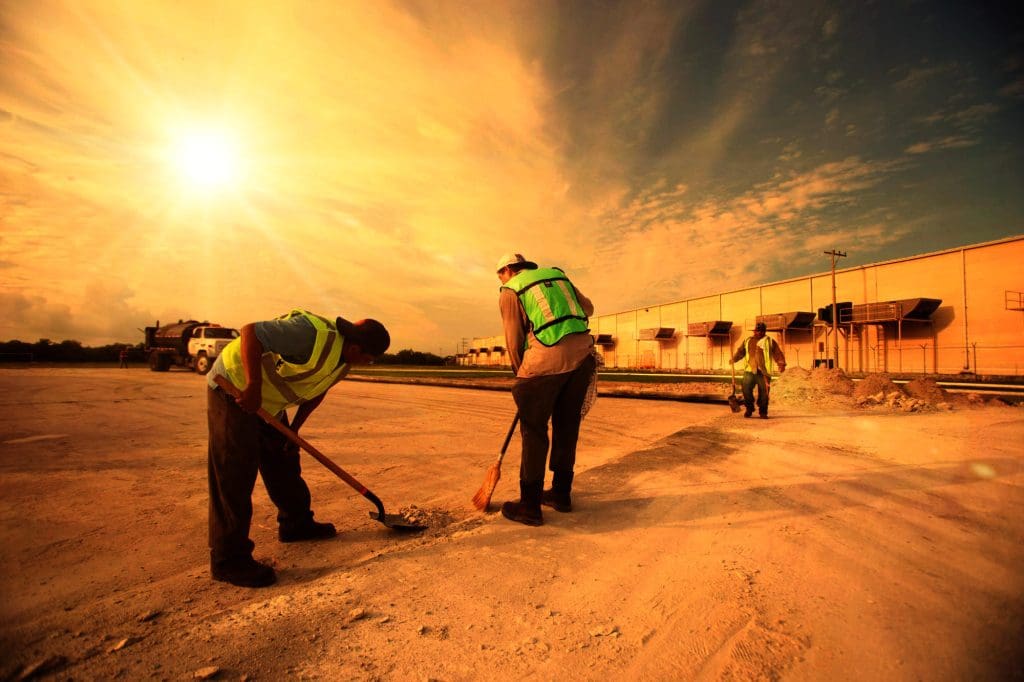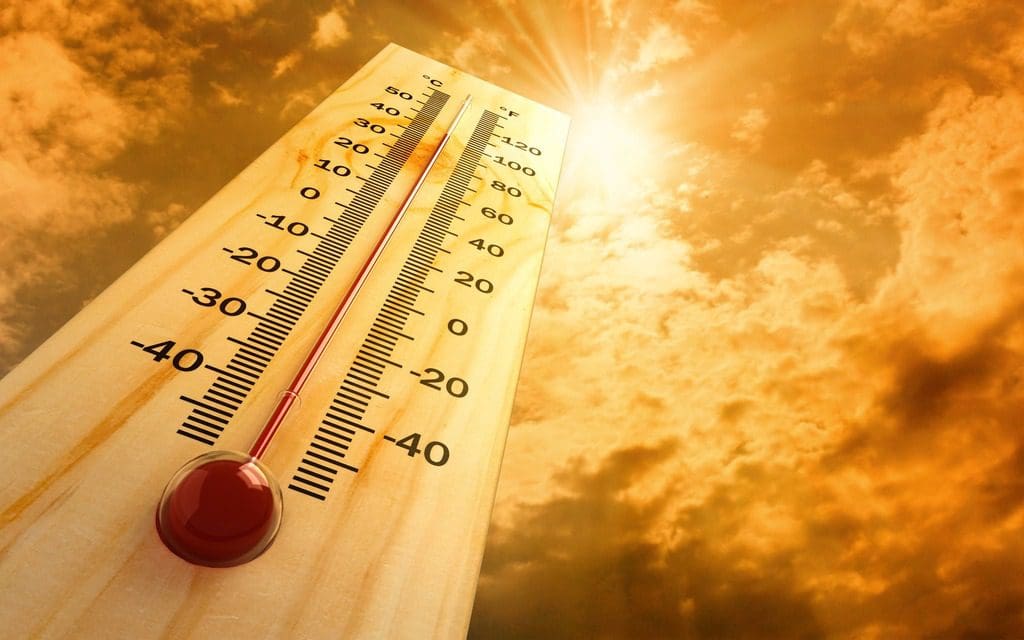Summer heat waves have been the biggest warm weather-related killer in Wisconsin for more than 50 years, far exceeding tornado and other storm-related deaths.
The inside of a vehicle can be especially dangerous. On an 80-degree Fahrenheit day, temperatures inside a vehicle parked in direct sunlight can climb almost 20 degrees in 10 minutes.
Never leave people or pets inside a parked vehicle. Leaving a window cracked is not enough!
Terms Used During Extreme Heat

Heat Index
The Heat Index is a measure of how hot it really feels when relative humidity is factored in with the actual air temperature. Since heat index values were devised for shady, light wind conditions, exposure to full sunshine can increase heat index values by up to 15°F.

Heat Advisory
This is issued within 12 hours of the start of extremely dangerous heat conditions. The National Weather Service will issue a heat advisory for Wisconsin when the daytime heat index values are 100 to 104. A heat advisory will also be issued if heat indices are 95 to 99 for four consecutive days.

Extreme Heat Watch
An Extreme Heat Watch is issued when conditions are favorable for an extreme heat event, but its occurrence and timing is still uncertain, though likely in the next 24-72 hours.

Extreme Heat Warning
This is issued within 12 hours of the onset of extremely dangerous heat conditions. It will be issued by the National Weather Service when the daytime heat index is 105 or higher during the day and 75 or higher at night for at least a 48-hour period. If heat indices are 100 to 104 for four consecutive days, an extreme heat warning will be issued.
How Heat Index Affects You
The Heat Index is an important consideration for comfort. In extreme heat your body works extra hard to maintain a normal temperature, which can lead to serious illness or death. Heat indices 103°F or greater can lead to dangerous heat disorders with prolonged exposure.
80° – 90°F Heat Index
Fatigue is possible with prolonged exposure and/or physical activity.
103° – 124°F Heat Index
Heat cramps or heat exhaustion likely, and heat stroke possible with prolonged exposure and/or physical activity.
125°F or Higher Heat Index
Heat stroke highly likely
Heat-Related Illnesses
Heat-related illnesses are preventable. Learn the symptoms and what to do.
Heat Stroke
What to look for:
- High body temperature (103°F or higher)
- Hot, red, dry, or damp skin
- Fast, strong pulse
- Headache
- Dizziness
- Nausea
- Confusion
- Losing consciousness (passing out)
What to do:
- Call 911 right away
- Move the person to a cooler place
- Help lower the person’s temperature with cool cloths or a cool bath
- Do not give the person anything to drink
Populations Vulnerable to Heat
Adults Over 65
They are less aware and adaptable to extreme heat.
People Living Alone and/or Without Air Conditioning
They may not know when to call for help.
Individuals with Disabilities
May not know or realize that they are in danger.
Children Under 5
Sensitive to effects of extreme heat and rely on others to keep them cool and hydrated.
People with Chronic Medical Conditions
Medical conditions can worsen the impact of extreme heat
Homeless
May be unaware of cooling centers and may have limited access to other cooling methods, such as cool showers.
Pets
Depend on owner for adequate protection from heat
Outdoor Workers
More likely to become dehydrated and more likely to get heat-related illnesses.
Non-English Speakers
May not have access to current information about heat advisories and health risks associated with extreme heat.

Protecting Yourself…
…Before Extreme Heat
- Do not rely on a fan as your primary cooling device. Fans create air flow, but do not reduce body temperatures or prevent heat-related illnesses
- Identify places in your community to get cool, such as libraries, shopping malls, or contact your local health department to find a cooling center in your area.
- Cover windows with drapes or shades
- Weather-strip doors and windows
- Use window reflectors specifically designed to reflect heat back outside.
- Use a powered attic ventilator or attic fan to clear out hot air in the attic
- Install window air conditioners and insulate around them.
- If you are unable to afford cooling costs, weatherization, or energy-related home repairs, contact the Low Income Home Energy Assistance Program (LIHEAP) for help.
…During Extreme Heat
- Take care of your body.
- Drink plenty of water. Make sure you drink before feeling thirsty. By the time you feel thirsty, you are already behind in fluid replacement. When working in the heat, drink one cup (8 ounces) of water every 15-20 minutes.
- Limit alcohol consumption. Drinking beer and alcoholic beverages cause further body dehydration.
- It is not recommended to take salt tablets. In most cases, salt can be replaced by eating normal meals and snacks throughout the day. Do not skip meals.
- Cover windows to keep the sun from shining in.
- If you have an air conditioner, use it. If you do not have one and the temperature is above 95 °F, you should go to a community cooling center because a fan will no longer prevent heat-related illnesses at this temperature.
- Pace yourself. Cut down on exercise during the heat. If you are not accustomed to working or exercising in a hot environment, start slowly and pick up the pace gradually. If exertion in the heat makes your heart pound and leave you gasping for breath, STOP all activity. Get into a cool area or shade and rest.
- Wear sunscreen. Sunburn affects your body’s ability to cool down. Put on a sunscreen of SPF 15 or higher 30 minutes before going outside and reapply as the package directs. Consider a wide-brimmed hat and sunglasses as well.
- Consider pet and livestock safety.
- Keep pets hydrated by providing clean and cool drinking water
- Provide shade with good air flow.
- Protect their paws. Place the back of your hand on the ground for five seconds. If it’s too hot for your skin, it’s too hot for your pet’s paw pads. Consider walking your pet in the early morning or in the evening when the asphalt has cooled down.
- Do not leave them in a car. Even with the windows cracked, the interior temperature can become deadly in minutes.
- Check on others.
- Check on older, sick, or frail people who may need help responding to heat.
- Don’t leave electronic equipment in hot cars.

